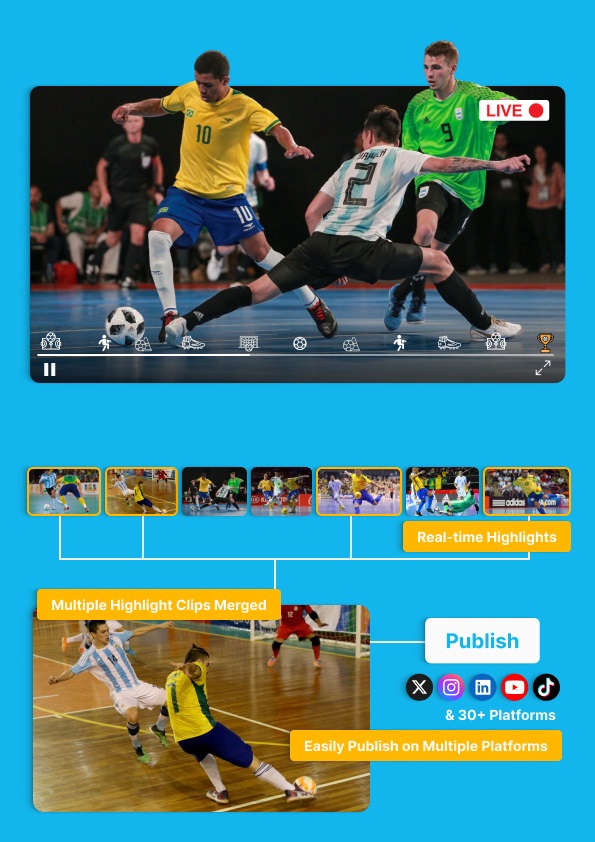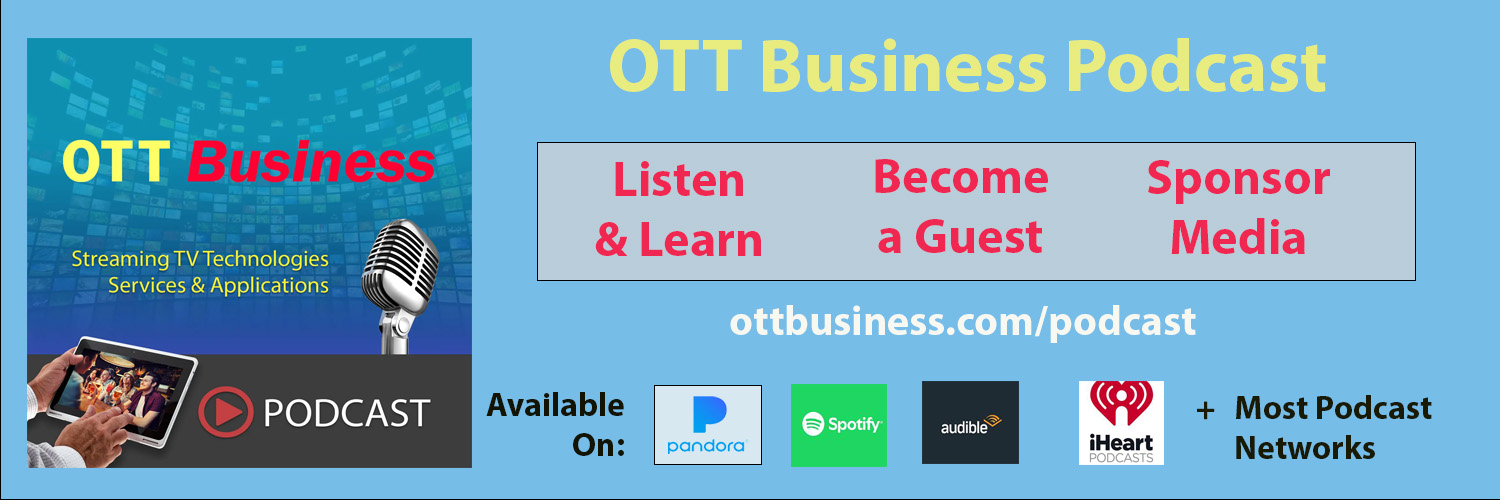by: Meghna Krishna
Sports media producers and TV broadcasters want to speed up, personalize and increase their content value with higher profit margins. AI-powered can improve fan engagement, optimize workflows for creating and distributing highlights, and increase the return on investment (ROI) for advertisers. AI transforms the traditional broadcasting model by enabling real-time, personalized experiences for viewers and streamlining the production of content, thereby making broadcasts more dynamic, engaging, and profitable.
The sports industry is rapidly changing. Spurred on by new technologies, such as artificial intelligence, machine learning, and computer vision, teams and leagues have more data on hand than ever before. The wider availability of data enables them to create more immersive experiences, especially for fans. This kind of fan experience inspires loyalty, encourages spending on their fandom, and increases engagement.
While many analysts have made these predictions, the hard numbers are also there. One forecast predicts that the value of AI in sports will reach US$19.2 billion by 2030.
AI will improve not only the fan experience but the quality of play. Teams can use AI to uncover trends and patterns, some of which may not even be noticeable to lifelong coaches. For example, some athletes may be exceptional role players for certain in-game situations. Alternatively, AI may reveal a particular combination of athletes that have a greater chemistry than meets the eye.
AI may also assist with the viewing experience. Sports broadcasters may use AI to assist in choosing the best angles in real-time, providing more interesting statistics and facts to their colour commentators, and identifying the most captivating on-field moments.
The power of AI for sports is also not speculative. Most of the big four sports leagues in the United States are employing AI and as the years progress, to an even greater degree. The NFL uses AI to analyse player performance, which is crucial because there are 22 players on a field at a time, and the action moves fast. In the NBA, teams are using AI to better scout players beyond the normal evaluation process, so that they have a greater chance of identifying overlooked talent both in the college ranks as well as overseas leagues.
Finally, MLB is using AI to assist with roster management. Should this player be offered a contract extension? Should this player be traded? Should they encourage this player to retire early and thus enable more play time for the rookies in the same role? Coaches would typically lose sleep over such big decisions, and ultimately make intuitive choices that don’t necessarily make them feel any better. AI can give them confidence that they are making the best decision possible, using not only their coaching experience but what the data advises.
AI for Personalization
When a fan tunes into a television broadcast, there is a general understanding that the fan experience is standardized. If I am watching a basketball game, my friend across town is watching the same basketball game on a screen-by-screen basis. There are some benefits to this one-size-fits-all experience: It makes it easier for fans to discuss games in real-time for instance.
The advantages of a personalized experience outweigh the benefits of a single, monolithic game broadcast. Can you imagine a situation in which a cricket fan gets a video feed that focuses on his favourite players and highlights? This fan is more likely to finish watching the game, tune into future broadcasts, and spend disposable income on patronizing the brand, whether it be through buying merchandise or game tickets.
When products seem tailored to you and only you, it is only natural that you may be more willing to buy them. According to a survey from McKinsey, the revenue uplift from personalization can be as high as 25% in some cases.
While this exact execution of personalized AI broadcasts may be a generation away, sports teams are already pioneering the way through novel integrations of the technology. For example, the Golden State Warriors in the NBA are using AI to create immersive fan experiences with virtual reality, while the Los Angeles Dodgers in the MLB are using AI to help fans more conveniently find their way to their seats.
Accelerate the Traditional Workflow
Highlights used to come out long after games finished. Because editors have to painstakingly review and cut videos on their own, these highlights would take many man-hours to generate. For their part, fans would not be able to enjoy them until they watched that evening’s sport show, which recapped the major highlights from the day.
AI changes this process. AI-based video editors, which are powered by algorithms, are able to quickly identify key moments both on and off the field, auto-generate relevant highlights in less than a minute, and assemble them into a larger compilation for livestreaming or broadcasting. Broadcasters gain the obvious advantage of speed: They can cater to fan interest when it is the highest.
This depth of understanding is also sport-specific. Because AI-based video editors use optical character recognition (OCR), neural networks, and digital image processing, these solutions can easily detect in-game events with the accuracy of human editors. It can also use crowd enthusiasm, commentator tone, and other variables as further signals for the importance of a given moment.
For example, a sports broadcaster can call on the meta-tag “three-pointer” to identify all the instances of these shots in a game. Because this meta-tag would yield a large amount of clips, the producer can filter based on importance. For example, one three-pointer, accompanied by the roar of the crowd and a frantic tone from the commentator, may be a particularly game-changing moment that ought to be included.
In this way, broadcasters and publishers can produce highlights at unprecedented speeds. During the 2022 Qatar World Cup, for example, automated highlights were integrated into Google Search Web Stories, catering to the surge of fans Google predicted would browse for the latest highlights.
Broadcasters also gain an advantage that should not be overlooked: scale. In addition to automated highlight generation, they can distribute these clips to more than two dozen different social platforms, including Facebook, LinkedIn, and even the increasingly popular mobile-first channels like TikTok.
Optimize for Better ROI
Finally, AI also enables advertisers to realize a better ROI on their advertising spend. Such will occur as AI will allow them to improve targetting, providing more relevant content and ads to the right audiences; enhanced tracking of their efforts; and even identify the best slots to maximize engagement with their target segment.
AI-powered video editors would be particularly helpful here. For example, Magnifi provides a powerful analytics suite. With this data, brands can see key metrics, such as views, shares, and comments, all from a single back-end. Additionally, Magnifi has a module that empowers producers to easily create templates, which ensures brand consistency not only as a broadcaster, but for any advertiser.
For example, one partner may be a presenting sponsor on a particular video series. These templates would guarantee that the presenting sponsorship is always displayed with the same logo, billboards, and other branded items.
All in all, AI will change sports and sports broadcasting end-to-end, aiding all stakeholders improve speed of access, personalization of content, and value.
About the Author Meghna Krishna
 Meghna Krishna, Chief Revenue Officer at VideoVerse, leverages her extensive global experience to drive revenue growth through innovative use of video AI for sports. With over two decades of success across various industries, she excels in building passionate teams and strategic partnerships to deliver top-tier services in the sports sector.
Meghna Krishna, Chief Revenue Officer at VideoVerse, leverages her extensive global experience to drive revenue growth through innovative use of video AI for sports. With over two decades of success across various industries, she excels in building passionate teams and strategic partnerships to deliver top-tier services in the sports sector.


